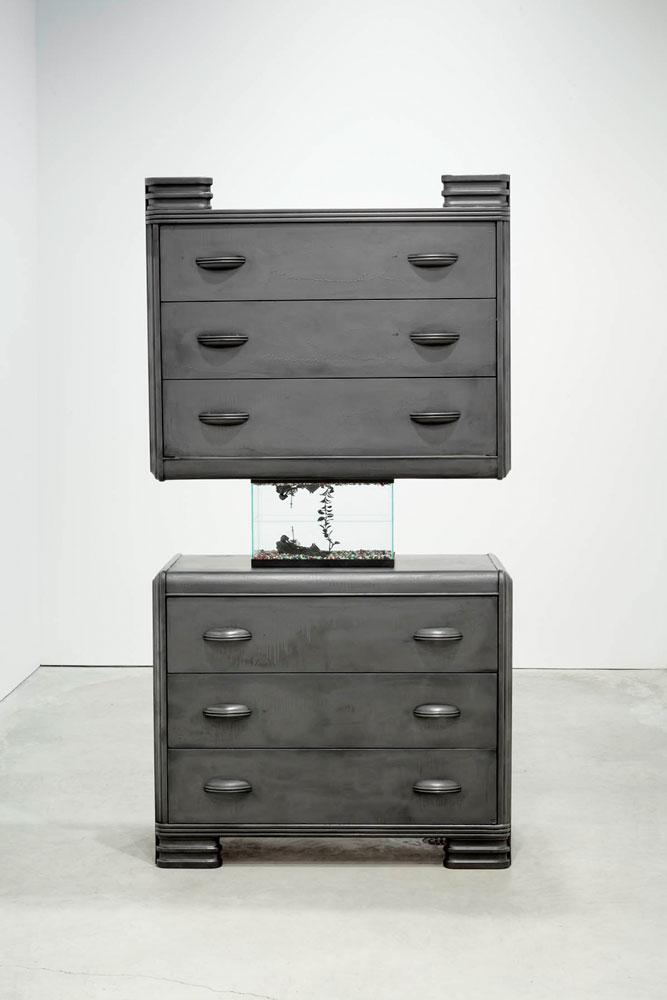The motif of the double calls to mind fluidity, changeability and duality. There is often an undertone of the sinister, as if a mirror image opens up space for uncertainty and ambiguity. The figure of the double features clearly and strikingly in Kevin Yates’s recent exhibition “Usher the Fall of the House.” The title itself is a clear reference to Edgar Allan Poe’s short story, in which doubles play a central role.
A focus on doubleness, and doubling back, can be seen in Yates’s earlier work, and here a combination of moving images and fixed installations allow for further exploration of how such imagery unsettles, yet prompts closer examination. A video piece titled Waterline (2013), in which an abandoned room in disarray appears to repeatedly flood and empty out again, offers not only a mirror image constantly approaching and receding; the accompanying soundtrack forms a background against which to view Yates’s newest models of homes.
The wall-mounted models, shown in streetviews lined with leafless trees, beckon us to look into the windows and through the doors. The mirrored models hanging below echo the imagery in the nearby video, with each doubled house offering at once a copy and another version. While the models are appealing in their detail and in the way they evoke a toy or even a dollhouse, the atmosphere of the collection as a whole is uneasy and unstable. The domesticity of the homes and the filmed room is made alien, distinctly unwelcoming, as the lapping sounds of the video create the impression that these places have been vacated suddenly and perhaps permanently.
On the ground floor of the gallery, the motif of doubles appears through pairs of birds which flit across torn wallpaper, again offering an atmospheric background chirping noise for the main installation—a waterless aquarium pressed between two dressers. Framed by the heavy furniture, the small glass case offers another mode of framing the image of death and decay.
The very placement of the pieces in the gallery reinforces the emphasis on doubleness, as visitors move between upper and lower floors, seeing and re-seeing. The cumulative effect of the pieces and setting echoes their individual appearance: we return and re-turn to the images and figures, as the thoughts and emotions they evoke resurface. We are destabilized and ultimately uncertain of which is copy and which is original, or where and how exactly the two versions/images meet and are reflected in each other.
This is a review from the Spring 2014 issue of Canadian Art. To read more from this issue, visit its table of contents.









